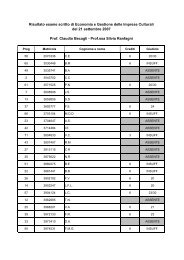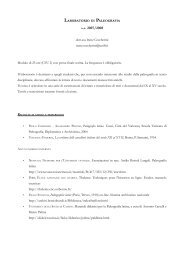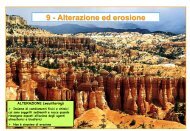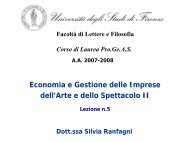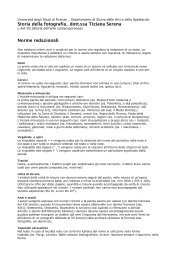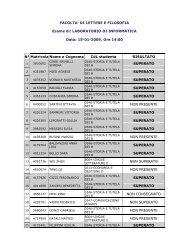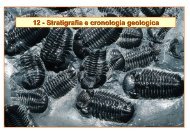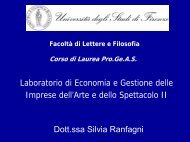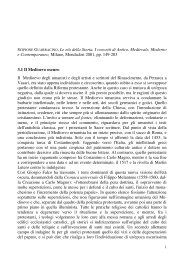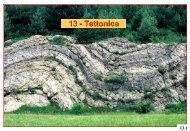Beyond Pragmatics. Morphosyntactic Development in Autism.pdf
Beyond Pragmatics. Morphosyntactic Development in Autism.pdf
Beyond Pragmatics. Morphosyntactic Development in Autism.pdf
You also want an ePaper? Increase the reach of your titles
YUMPU automatically turns print PDFs into web optimized ePapers that Google loves.
J <strong>Autism</strong> Dev Disord<br />
References<br />
Achenbach, T. M. (1991). Manual for the child behavior checklist/<br />
4–18 and 1991 profile. Burl<strong>in</strong>gton: University of Vermont,<br />
Department of Psychiatry.<br />
Adams, R., & Khoo, S. (1993). Quest, the <strong>in</strong>teractive test analysis<br />
system. Melbourne: ACER.<br />
American Psychiatric Association. (1994). Diagnostic and statistical<br />
manual of mental disorders (4th ed.). Wash<strong>in</strong>gton, DC:<br />
American Psychiatric Association.<br />
Baltaxe, C., & D’Angiola, N. (1997). Cohesion <strong>in</strong> the discourse<br />
<strong>in</strong>teraction of autistic, specifically language-impaired, and<br />
normal children. Journal of <strong>Autism</strong> and <strong>Development</strong>al<br />
Disorders, 22(1), 1–21.<br />
Bartak, L., Rutter, M., & Cox, A. (1975). A comparative study of<br />
<strong>in</strong>fantile autism and specific developmental language disorder:<br />
I. The children. British Journal of Psychiatry, 126, 127–<br />
145.<br />
Bartolucci, G. (1982). Formal aspects of language <strong>in</strong> childhood<br />
autism. In Advances <strong>in</strong> child behavior analysis and therapy<br />
(Vol. 2, pp. 159–18). Lex<strong>in</strong>gton, MA: Lex<strong>in</strong>gton Books.<br />
Bartolucci, G., & Albers, R. J. (1974). Deictic categories <strong>in</strong> the<br />
language of autistic children. Journal of <strong>Autism</strong> and Childhood<br />
Schizophrenia, 19, 131–141.<br />
Bartolucci, G., Pierce, S. J., & Stre<strong>in</strong>er, D. (1980). Crosssectional<br />
studies of grammatical morphemes <strong>in</strong> autistic and<br />
mentally retarded children. Journal of <strong>Autism</strong> and <strong>Development</strong>al<br />
Disorders, 10(1), 39–50.<br />
Bates, E. (1997). Orig<strong>in</strong>s of language disorders: A comparative<br />
approach. <strong>Development</strong>al Neuropsychology, 13(3), 447–476.<br />
Bennetto, L., Penn<strong>in</strong>gton, B. F., & Rogers, S. J. (1996). Intact<br />
and impaired memory functions <strong>in</strong> autism. Child <strong>Development</strong>,<br />
67, 1816–1835.<br />
Bloom, L., Lahey, J., Hood, L., Lifter, K., & Fiess, K. (1980).<br />
Complex sentences: Acquisition of syntactic connectives<br />
and the semantic relations they encode. Journal of Child<br />
Language, 7, 235–261.<br />
Bloom, L., Rocissano, L., & Hood, L. (1976). Adult–child discourse:<br />
<strong>Development</strong>al <strong>in</strong>teraction between <strong>in</strong>formation<br />
process<strong>in</strong>g and l<strong>in</strong>guistic knowledge. Cognitive Psychology,<br />
8, 521–552.<br />
Brown, R. (1973). A first language: The early stages. Cambridge,<br />
MA: Harvard University Press.<br />
Capps, L., Losh, M., & Thurber, C. (2000). The frog ate the bug<br />
and made his mouth sad’’: Narrative competence <strong>in</strong> children<br />
with autism. Journal of Abnormal Child Psychology, 28(2),<br />
193–204.<br />
Carpentieri, S. C., & Morgan, S. B. (1994). Brief report: A<br />
comparison of patterns of cognitive function<strong>in</strong>g of autistic<br />
and nonautistic retarded children on the Stanford-B<strong>in</strong>et –<br />
Fourth Edition. Journal of <strong>Autism</strong> and <strong>Development</strong>al Disorders,<br />
24(2), 215–223.<br />
Chomsky, N. (1957). Syntactic structures. In. The Hague: Mouton.<br />
Cohen, J. (1960). A coefficient of agreement for nom<strong>in</strong>al scales.<br />
Educational and Psychological Measurement, 20, 37–46.<br />
Condouris, K., Meyer, E., & Tager-Flusberg, H. (2003). The<br />
relationship between standardized measures of language<br />
and measures of spontaneous speech <strong>in</strong> children with autism.<br />
American Journal of Speech–Language Pathology,<br />
12(3), 349–358.<br />
Cox, A., Charman, T., Baron-Cohen, S., Drew, A., Kle<strong>in</strong>, K.,<br />
Baird, G., et al. (1999). <strong>Autism</strong> spectrum disorders at 20 and<br />
42 months of age: Stability of cl<strong>in</strong>ical and ADI-R diagnosis.<br />
Journal of Child Psychology and Psychiatry, 40(5), 719–732.<br />
Curcio, F., & Paccia, J. (1987). Conversations with autistic children:<br />
cont<strong>in</strong>gent relationships between features of adult<br />
<strong>in</strong>put and children’s response adequacy. Journal of <strong>Autism</strong><br />
and <strong>Development</strong>al Disorders, 17(1), 81–93.<br />
Dahlgren, S. O., & Gillberg, C. (1989). Symptoms <strong>in</strong> the first two<br />
years of life: A prelim<strong>in</strong>ary population study of <strong>in</strong>fantile<br />
autism. European Archives of Psychiatric and Neurological<br />
Science, 283, 169–174.<br />
Dalgleish, B. (1975). Cognitive process<strong>in</strong>g and l<strong>in</strong>guistic reference<br />
<strong>in</strong> autistic children. Journal of <strong>Autism</strong> and <strong>Development</strong>al<br />
Disorders, 5(4), 353–361.<br />
de Villiers, J. G., & de Villiers, P. A. (1973). A cross-sectional<br />
study of the acquisition of grammatical morphemes <strong>in</strong> child<br />
speech. Journal of Psychol<strong>in</strong>guistic Research, 2, 267–278.<br />
Demuth, K. (1996). Collect<strong>in</strong>g spontaneous production data. In<br />
D. McDaniel, C. McKee, & H. Smith Cairns (Eds.), Methods<br />
for assess<strong>in</strong>g children’s syntax (pp. 3–22). Cambridge,<br />
MA: MIT Press.<br />
Diehl, J. D., Bennetto, L., & Young, E. C. (2006). Story recall<br />
and narrative coherence of high-function<strong>in</strong>g children with<br />
autism spectrum disorders. Journal of Abnormal Child<br />
Psychology, 34, 87–102.<br />
Dunn, L. M., & Dunn, L. M. (1997). Peabody picture vocabulary<br />
test-3. Circle P<strong>in</strong>es, MN: American Guidance Service.<br />
Eigsti, I. M., & Bennetto, L. (2001). Syntactic and memory<br />
functions <strong>in</strong> young children with autism. San Diego, CA:<br />
Paper presented at the International Society for <strong>Development</strong>al<br />
Psychobiology.<br />
Fe<strong>in</strong>, D., & Waterhouse, L. (1979). <strong>Autism</strong> is not a disorder of<br />
language. Boston, MA: Paper presented at the New England<br />
Child Language Association.<br />
Fombonne, E. (1999). The epidemiology of autism: A review.<br />
Psychological Medic<strong>in</strong>e, 29(4), 769–786.<br />
Foster (1986). Learn<strong>in</strong>g discourse topic management <strong>in</strong> the<br />
preschool years. Journal of Child Language, 13, 231–250.<br />
Fowler, A. E. (1980). A comparison of normal and retardate<br />
language equated on MLU. Boston, MA: Paper presented at<br />
the Boston University Conference on Child Language<br />
<strong>Development</strong>.<br />
Godber, T., Anderson, V., & Bell, R. (2000). The measurement<br />
and diagnostic utility of <strong>in</strong>trasubtest scatter <strong>in</strong> pediatric neuropsychology.<br />
Journal of Cl<strong>in</strong>ical Psychology, 56(1), 101–112.<br />
Grice, H. P. (1975). Logic and conversation. In P. Cole &<br />
J. Morgan (Eds.), Syntax and semantics (Vol. 3, pp. 41–58).<br />
NY: Academic Press.<br />
Hermel<strong>in</strong>, B., & O’Connor, N. (1975). The recall of digits by<br />
normal deaf and autistic children. British Journal of Psychology,<br />
66, 203–209.<br />
Hoff-G<strong>in</strong>sberg, E. (1991). Mother–child conversation <strong>in</strong> different<br />
social classes and communicative sett<strong>in</strong>gs. Child <strong>Development</strong>,<br />
62(4), 782–796.<br />
Holl<strong>in</strong>gshead, A. B. (1975). Four factor <strong>in</strong>dex of social status.<br />
New Haven, CT: Yale University Department of Sociology.<br />
Howl<strong>in</strong>, P. (1984a). The acquisition of grammatical morphemes<br />
<strong>in</strong> autistic children: A critique and replication of the f<strong>in</strong>d<strong>in</strong>gs<br />
of Bartolucci, Pierce, and Stre<strong>in</strong>er, 1980. Journal of <strong>Autism</strong><br />
and <strong>Development</strong>al Disorders, 14, 127–136.<br />
Howl<strong>in</strong>, P. (1984b). The acquisition of grammatical morphemes<br />
<strong>in</strong> autistic children: a critique and replication of the f<strong>in</strong>d<strong>in</strong>gs<br />
of Bartolucci, Pierce, and Stre<strong>in</strong>er, 1980. Journal of <strong>Autism</strong><br />
and <strong>Development</strong>al Disorders, 14(2), 127–136.<br />
Howl<strong>in</strong>, P. (2003). Outcome <strong>in</strong> high-function<strong>in</strong>g adults with<br />
autism with and without early language delays: implications<br />
for the differentiation between autism and Asperger syndrome.<br />
<strong>Autism</strong> and <strong>Development</strong> Disorders, 33(1), 3–13.<br />
123


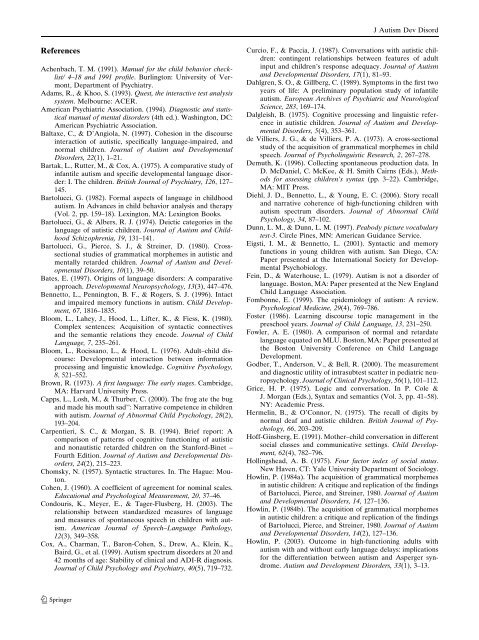
![PATROLOGIA GRECA E LATINA [Patrologiae cursus completus]. All ...](https://img.yumpu.com/50711133/1/184x260/patrologia-greca-e-latina-patrologiae-cursus-completus-all-.jpg?quality=85)
